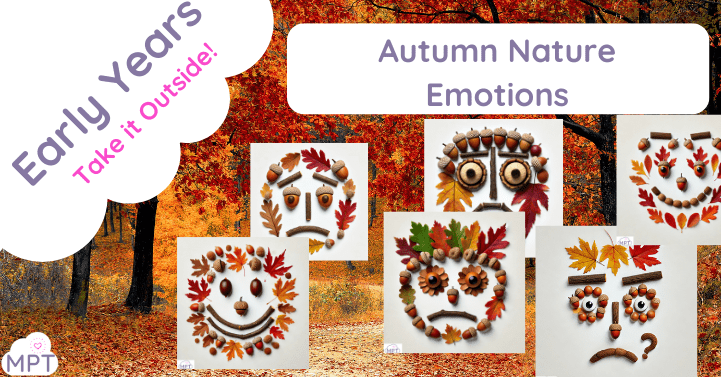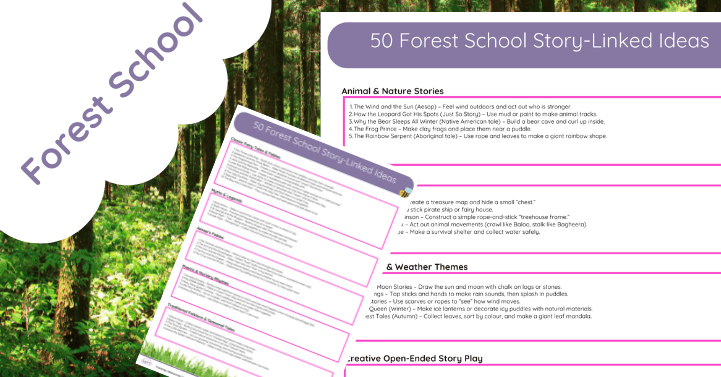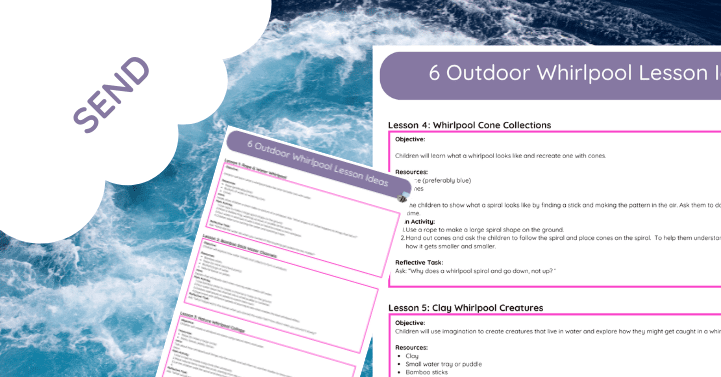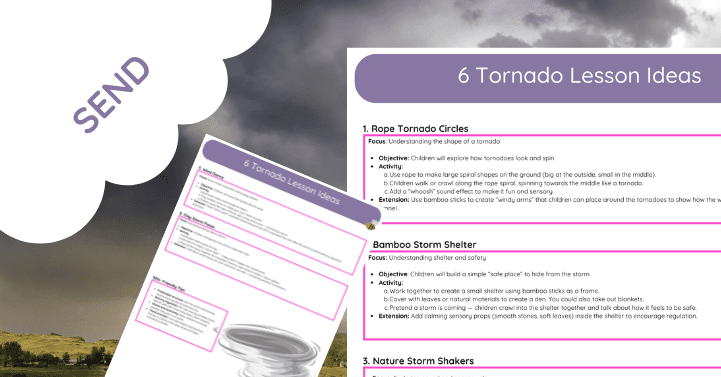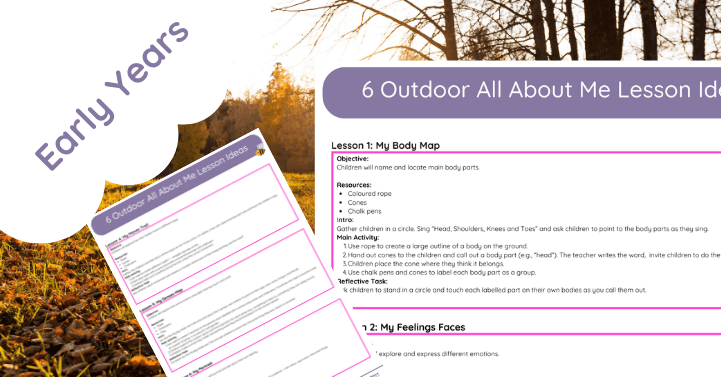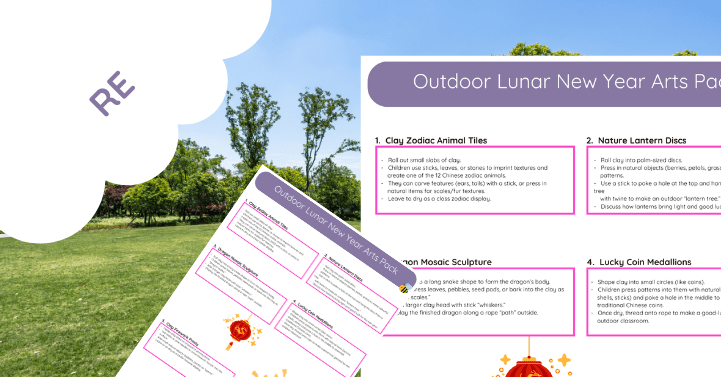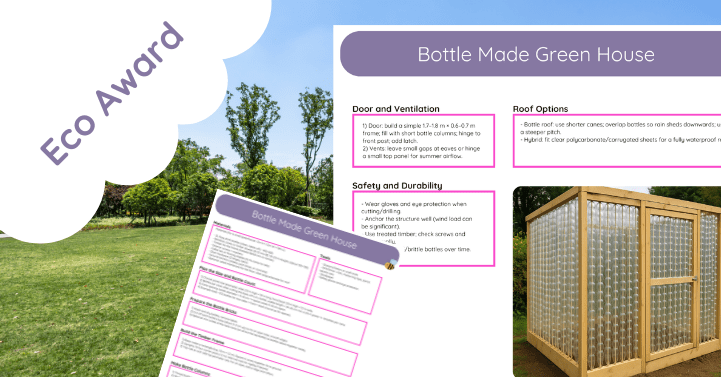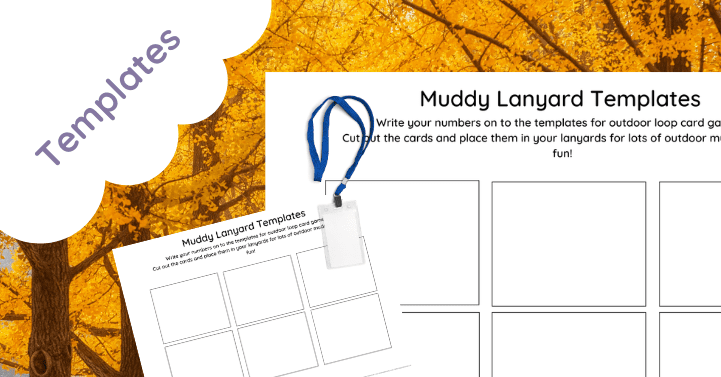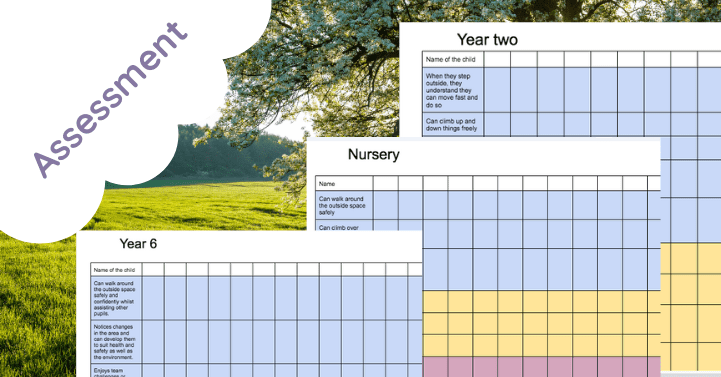Autumn Nature Emotions: Explore Feelings with Loose Parts
Introduce children to emotions hands-on, nature-inspiredly with Autumn Nature Emotions! This unique resource uses loose parts, such as acorns, autumn leaves, conkers, and sticks, to create expressive faces and help children explore and identify emotions. Designed for early years educators, parents, and caregivers, this set encourages creativity, emotional literacy, and fine motor skills as children assemble different faces representing various emotions like happy, sad, surprised, and more.
Children can use the loose parts to form expressions, learning about feelings through engaging, open-ended play. The natural materials add a sensory-rich experience, connecting children to nature and fostering mindful play. Perfect for indoor or outdoor use, these nature-based parts are ideal for classrooms, nature tables, and at-home learning environments.
Product Highlights:
- Emotion Exploration: Children create faces representing emotions, promoting social and emotional development.
- Hands-On Learning: Loose parts encourage open-ended play, imagination, and motor skill development.
- Nature-Based Materials: Includes natural items like acorns, leaves, and sticks, connecting children to the beauty of autumn.
- Versatile for Various Settings: It is ideal for classrooms, therapy sessions, and at-home play, providing an engaging learning experience.
With Autumn Nature Emotions, children can discover the world of feelings through creative play, developing emotional awareness and a connection to the natural world.
The Importance of Teaching Emotions with Loose Parts Play
Understanding and managing emotions is a key part of children’s development. By learning to identify and express emotions, children build essential social skills and emotional resilience. One highly effective and engaging way to teach emotional awareness is through loose parts play. Using natural and everyday materials like stones, leaves, and acorns, children can create faces and shapes that represent different feelings, helping them understand and talk about their emotions.
In this blog, we’ll explore the benefits of using loose parts to teach emotions and link to resources and studies that emphasize the value of emotional learning through play.
1. Enhances Emotional Literacy
Loose parts play offers children an open-ended way to explore different emotions. By arranging simple materials like sticks and leaves to represent facial expressions, children can visually experiment with emotions. This hands-on activity makes abstract feelings more concrete, allowing them to identify different emotions.
According to The Center on the Social and Emotional Foundations for Early Learning (CSEFEL), teaching children emotional literacy helps them better understand and communicate their feelings, improving their ability to handle social situations.
2. Encourages Creativity and Problem-Solving
Loose parts play is known for its role in fostering creativity and problem-solving skills. Since there is no “right” way to create a face, children use their imagination to explore different ways of expressing emotions. This open-ended activity allows children to experiment with materials and create unique expressions.
Research from Harvard Graduate School of Education suggests that creative play is crucial for developing problem-solving skills, as it encourages children to think independently and try different approaches to achieve their desired outcomes.
3. Supports Fine Motor Skill Development
Manipulating loose parts to create emotions and faces supports fine motor skills. Picking up small objects, arranging them into shapes, and placing them precisely requires dexterity and hand-eye coordination. These skills are essential for many future tasks, from writing to tying shoelaces.
The National Association for the Education of Young Children (NAEYC) highlights the importance of fine motor skills in early childhood development, stating that such skills are foundational for school readiness and independence.
4. Promotes Mindfulness and Focus
Loose parts play with natural materials, like leaves or stones, introduces a sensory element to emotional learning. Children engage deeply with the textures and shapes of these materials, which encourages a state of mindfulness. This kind of play allows children to focus on the present moment, which can be calming and therapeutic.
According to Greater Good Science Center at UC Berkeley, mindfulness in childhood supports emotional regulation and improves concentration, helping children navigate stressful situations more effectively.
5. Encourages Social Skills and Communication
Creating emotions with loose parts play is a fantastic way for children to explore social dynamics. When working together, children discuss which parts to use, how to create faces, and what emotions to represent. These interactions provide an opportunity for them to build empathy, as they start to understand others’ feelings by observing and discussing expressions.
Research from Zero to Three, an organization focused on early childhood development, emphasizes the importance of social-emotional learning, noting that these skills are essential for forming healthy relationships and succeeding in group settings.
6. Fosters Connection with Nature
Using natural materials like acorns, sticks, and leaves connects children to the environment. This connection to nature can have therapeutic effects, reducing anxiety and promoting a sense of calm. Nature-based play also encourages respect for the environment and a sense of stewardship.
The Children & Nature Network has found that exposure to nature supports mental well-being in children and promotes environmental consciousness, providing lifelong benefits.
7. Makes Emotions Accessible and Fun
Loose parts play turns emotional learning into a game. By creating different faces and expressions, children engage with emotions in a playful, non-intimidating way. This approach removes the stress that some children may feel about discussing their feelings, making emotional learning more accessible.
PBS Kids suggests that when emotions are taught in a fun, interactive way, children are more likely to feel comfortable exploring and expressing their feelings.
8. Teaches Resilience through Trial and Error
Loose parts play is a trial-and-error process. Children may rearrange the parts multiple times before achieving the desired emotion. This process teaches resilience, as children learn to handle frustration and keep trying until they succeed.
The American Psychological Association (APA) states that resilience in children is built through experiences that involve overcoming challenges, which helps them learn persistence and problem-solving skills.
9. Develop empathy and Understanding
Creating different facial expressions encourages children to explore a range of emotions, helping them understand that feelings are complex and that everyone experiences them. This builds empathy, as children learn to recognize and validate others’ emotions.
The Collaborative for Academic, Social, and Emotional Learning (CASEL) explains that empathy is an essential social skill, and activities that promote understanding of emotions are fundamental in developing this trait.
10. Provides a Foundation for Lifelong Emotional Well-being
By learning to identify and express emotions through loose parts play, children develop the tools they need for lifelong emotional health. These early experiences lay a foundation for self-awareness, empathy, and effective communication, which are essential skills for building healthy relationships and managing life’s challenges.
The Centers for Disease Control and Prevention (CDC) notes that social-emotional development in early childhood is crucial for overall mental health and well-being, providing children with the skills needed for success in school and beyond.
Bringing Emotional Learning into the Classroom with Loose Parts
Incorporating loose parts play into early childhood education is simple and affordable. Teachers can use materials like stones, leaves, sticks, or even recycled items to create a “loose parts emotions station” where children can make faces and explore different expressions. Activities like these foster emotional literacy while allowing children to develop social, motor, and cognitive skills in an engaging, hands-on way.
By integrating these activities, parents and educators can nurture a generation of children who are emotionally aware, empathetic, and resilient. Loose parts play makes emotional learning accessible, natural, and fun—creating a positive, lasting impact on young children’s lives.


